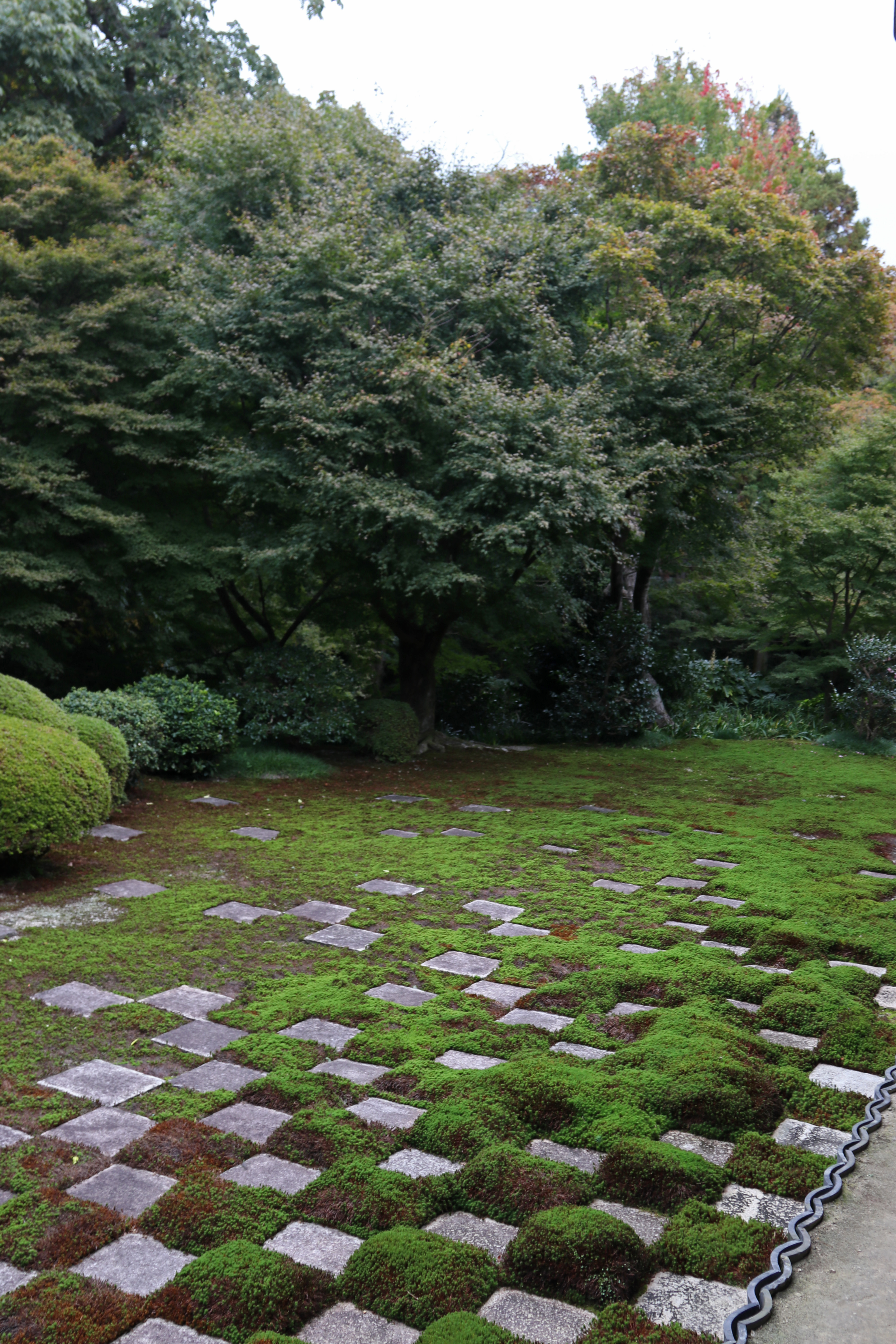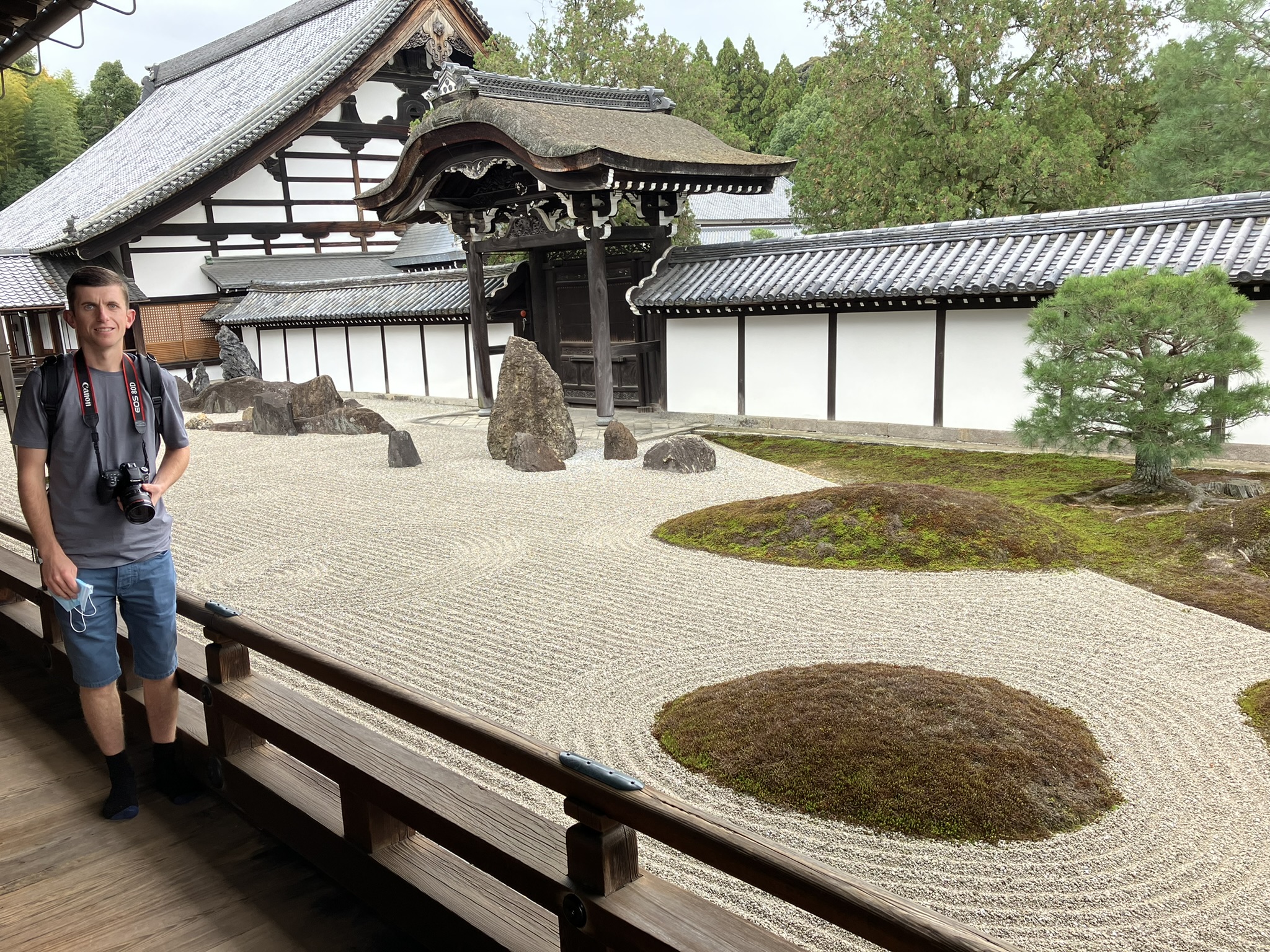tofuku-Ji Temple
We visited Tofuku-Ji
Temple after visiting the Ujigami Shrine. Tofuku-ji Temple is located nearer Kyoto…which
meant from Ujigami Shine heading back to Uji station, jumping back on the Nara
Line which only took 5 stops and about 25 minutes. Alternatively, Tofuku-ji can
be reached direct from Kyoto station only taking a few minutes on the Nara
Line, or by Bus only talking about 15 minutes.
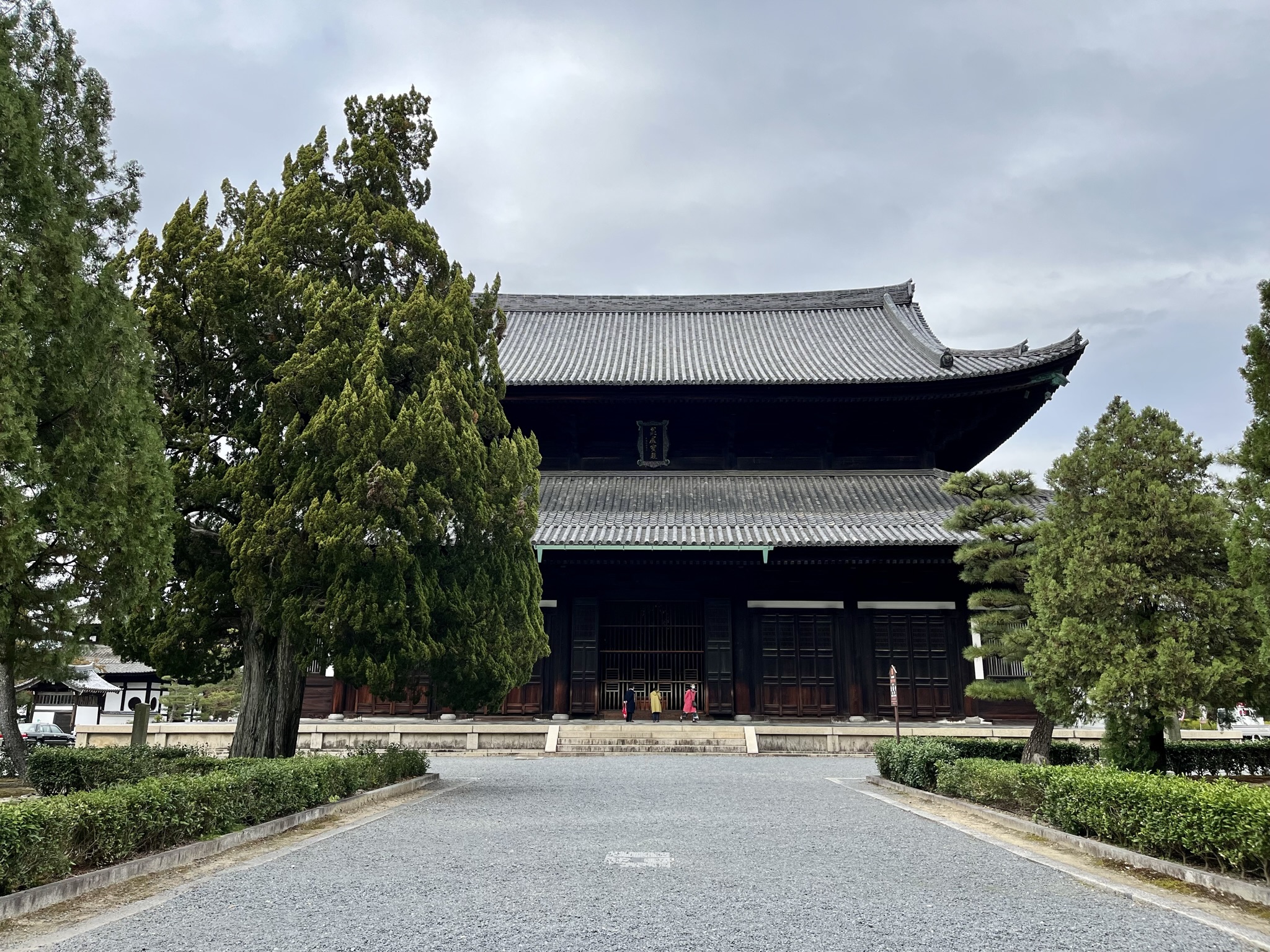
From the station it was only a short walk navigating through some old streets to the temples entrance. Admission into the temple and its gardens was only 1000 yen (£6), but the large areas around the temple’s buildings are free, walking around the grounds the temple’s large buildings are very impressive and stunning, especially the 22 meters high Sanmon Gate which is said have been built in 1425 and one of the oldest Zen gates of its kind.

Tofukuji Temple is a large
Zen Temple situated in south-eastern Kyoto and established in 1236 by the
powerful Fujiwara clan. The temple is one of the finest in Kyoto, with its name
being a combination of two great temples in Nara that were also connected with
Fujiwara, Todaiji Temple and Kofukuji Temple…both of these temples we have also
visited and are stunning!
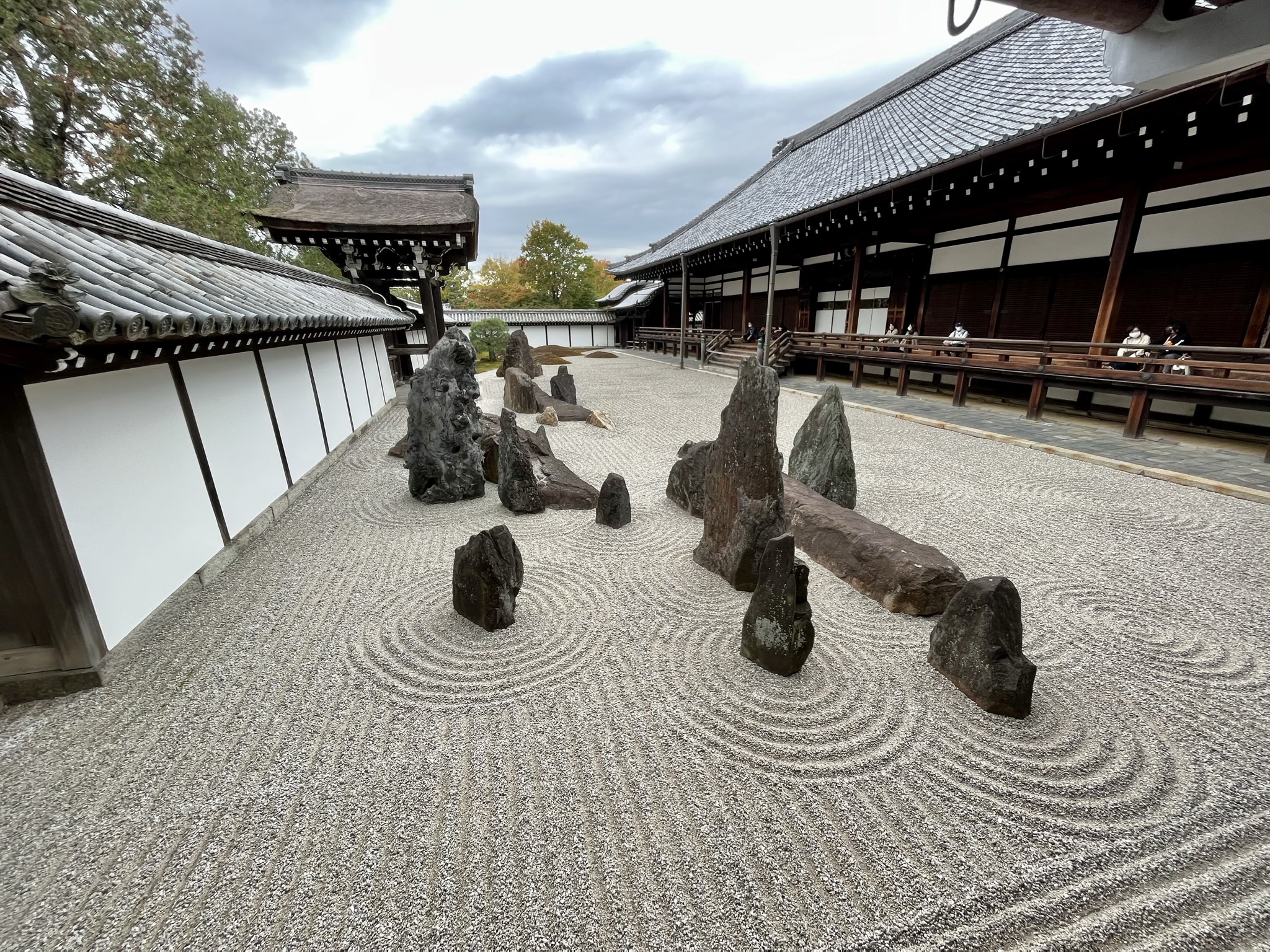
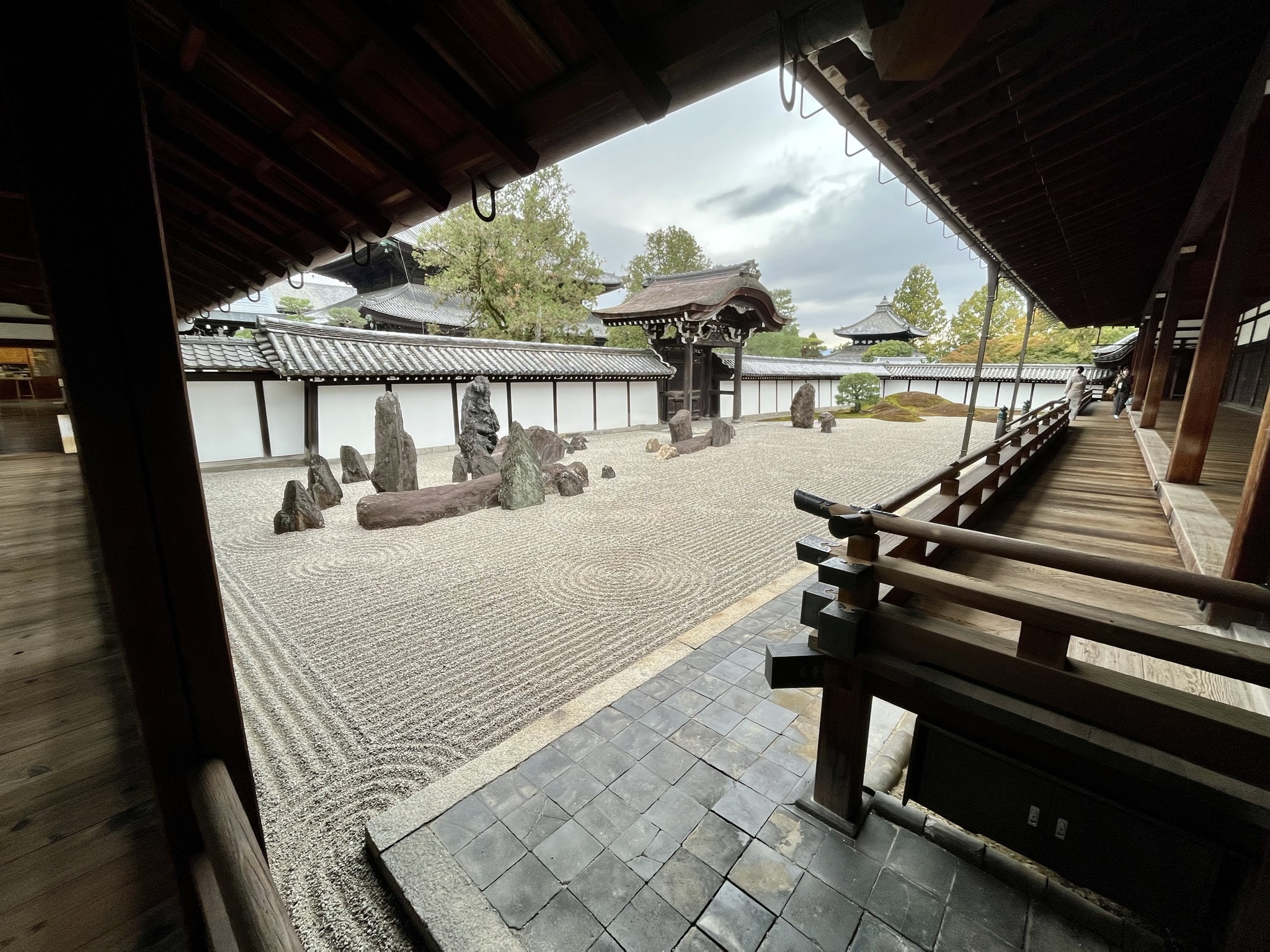
The Hojo was most recently restored in 1890, with the gardens being restored only in the 1930’s.

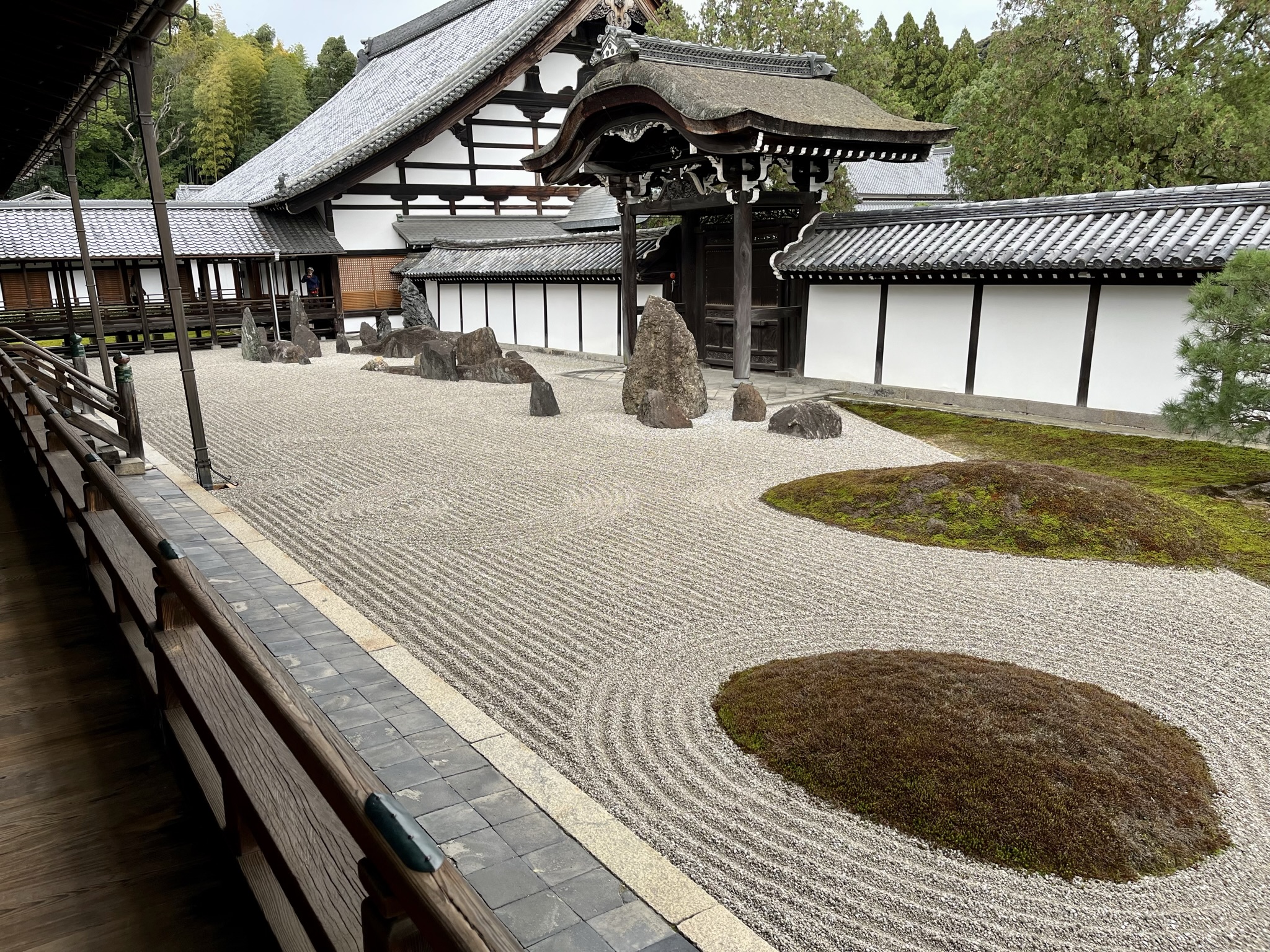
From the Hojo we then took in the views from the Tsutenkyo Bridge, which spans 100 meters over a valley of lush maple trees…at the time we visited they were in full autumn colour, which Tofukuji is famous for.
From Tofukiji we then
retraced our steps back to the train station to catch the short train journey
back to Kyoto station.
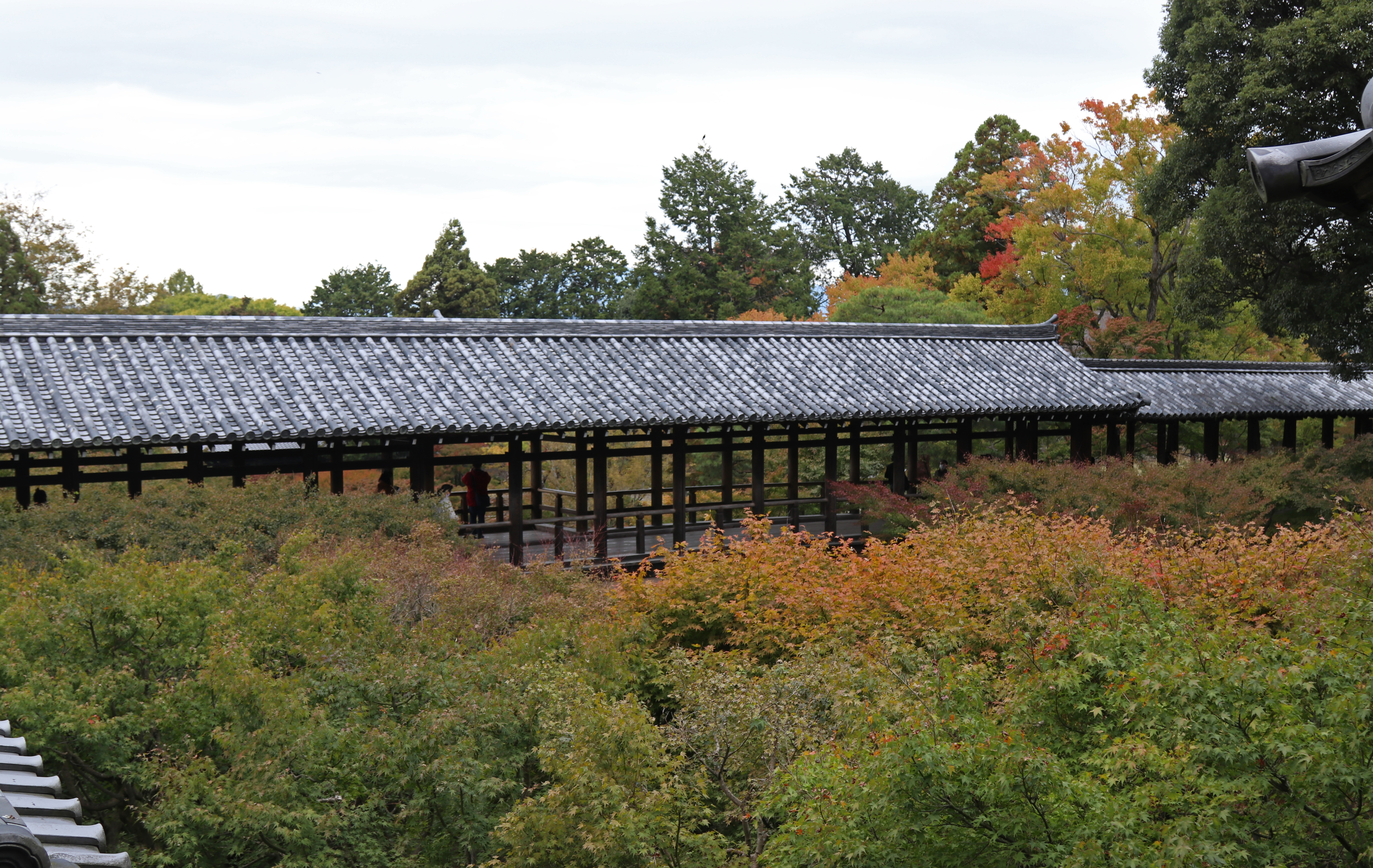
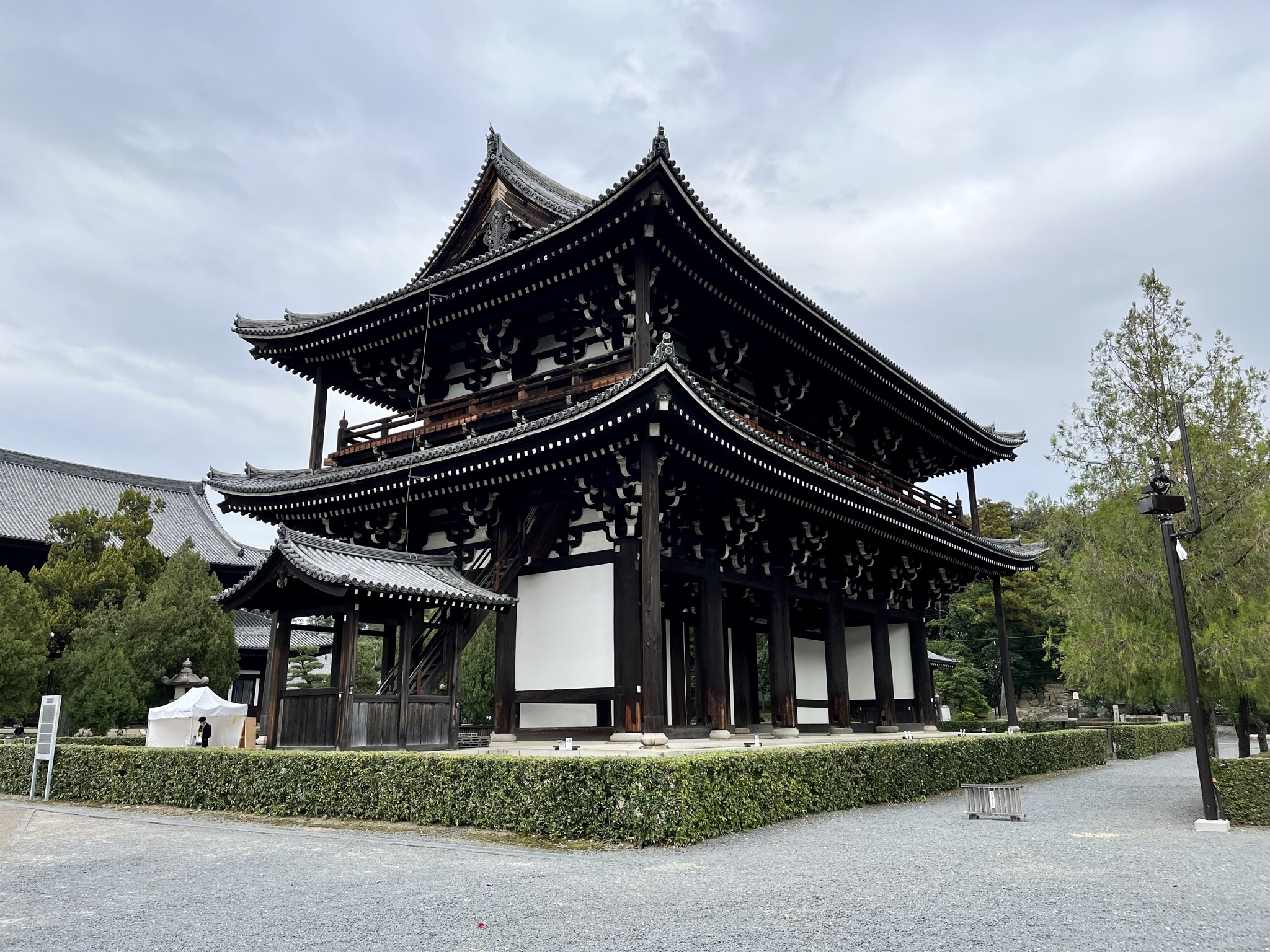
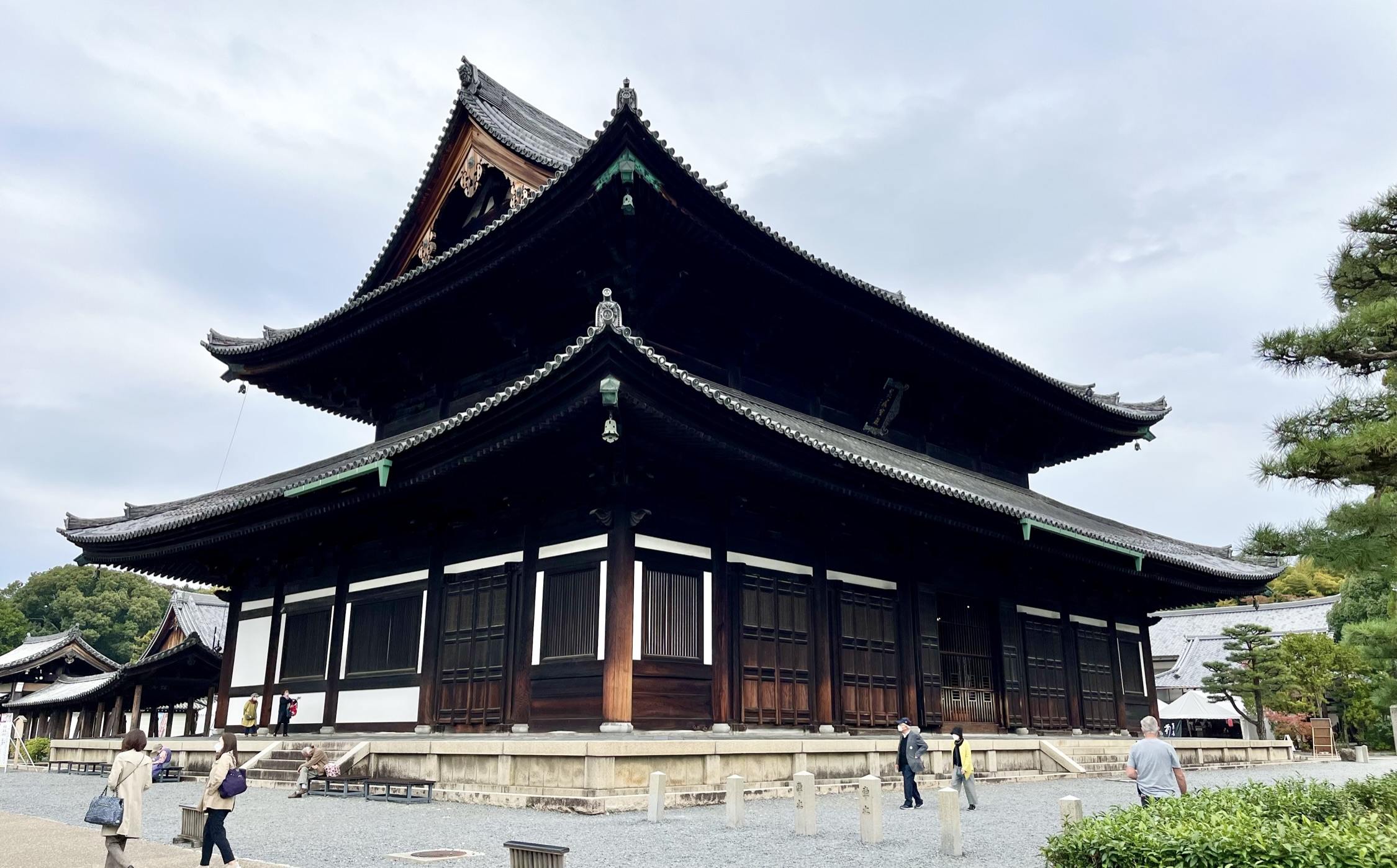
Behind the gate is the Hondo main hall which is even larger! Though it was only constructed in 1934.
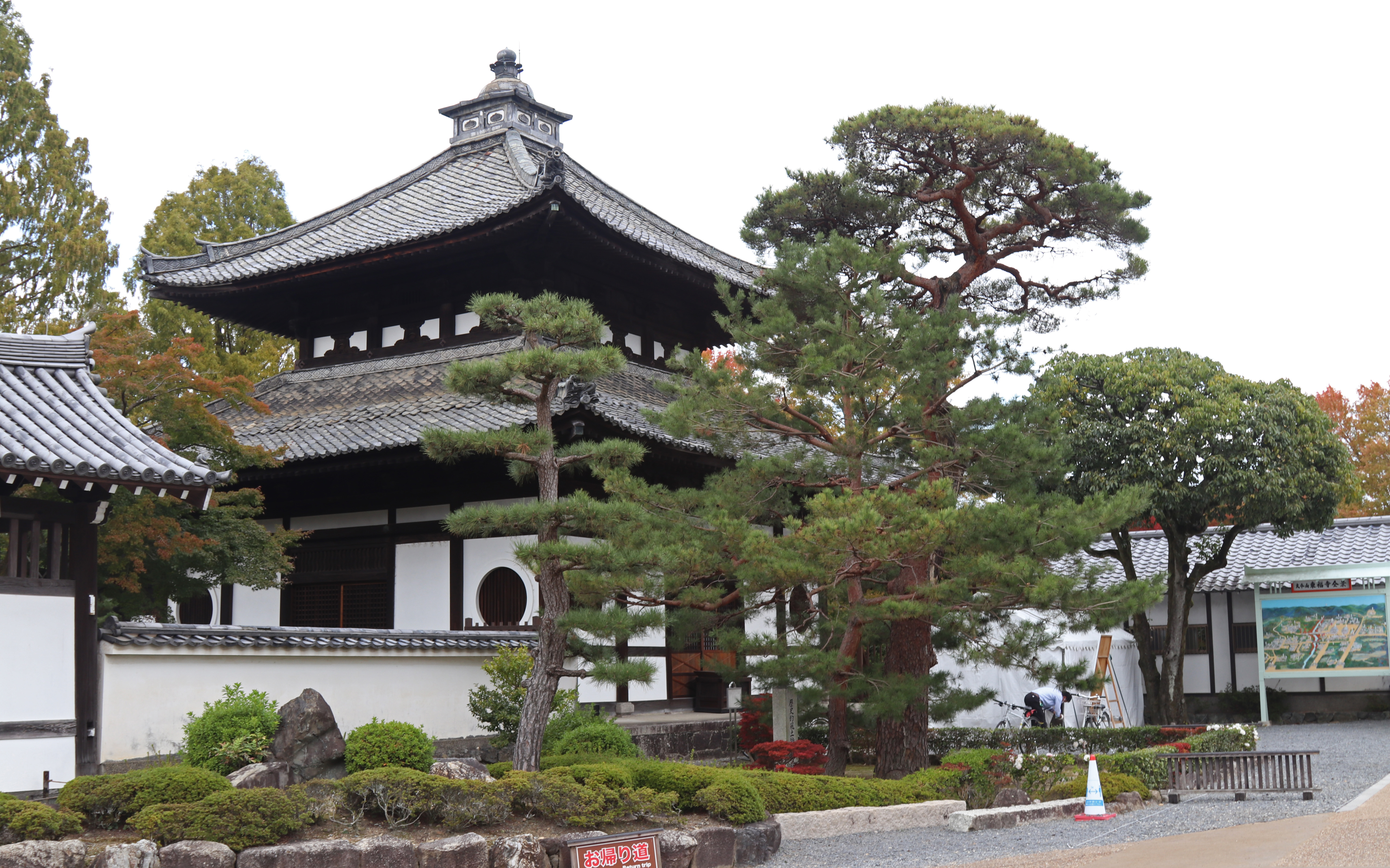
Dotted around the large
structures there are also some rare temple buildings dating back to the early
Muromachi Period (1333-1573).


After walking around the temple’s grounds, we then headed for the Hojo. The Hojo or Abbot’s Hall is present in most temples and refers to the private quarters of the abbot in a Buddhist monastery, and the case of Tofukuji the head priests former living quarters. To enter the Hojo we first has to remove our shoes and place them on a wooden rack outside the entrance…from what we have experienced this is done at all Hojo’s or former private parts of a temple. Most temple Hojo often had a rock garden built alongside the building, but in the case of Tofukuji’s Hojo it was unique as there were gardens surrounding the building on all sides, each garden symbolises within their design the 8 aspects of the Buddha’s life. The hallways of Hojo guided us to each garden, all with different features from pebbles, moss, trees and checkered patterns…but the most impressive was the rock garden…it seemed so simple, yet complex, it was stunning! The strategically placed rocks, perfectly raked gravel, moss and the buildings in the backdrop all could be viewed from two sides, giving a different dynamic to the garden.
